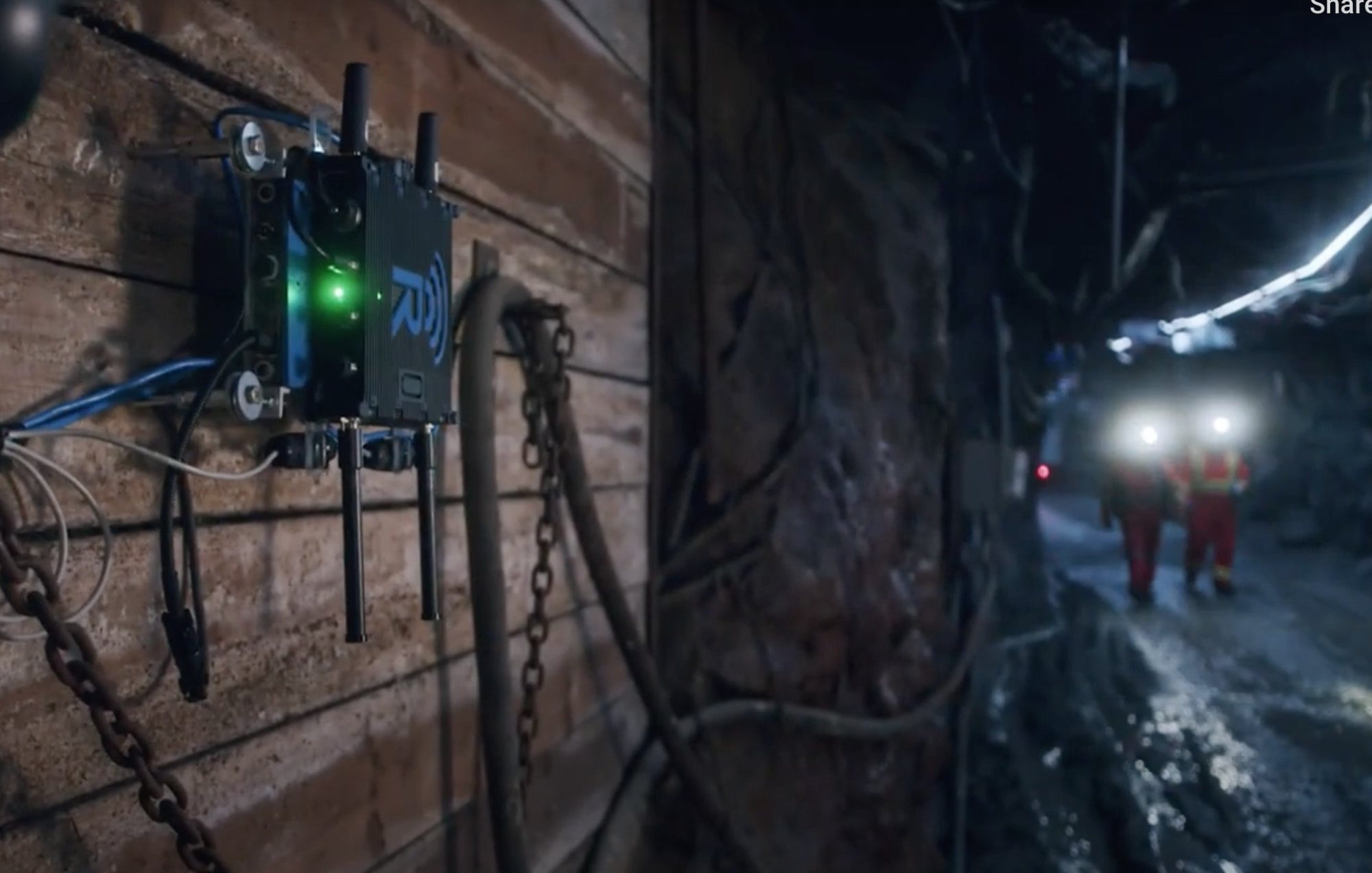Rajant Corporation, the pioneer of Kinetic Mesh® wireless networks, says it has collaborated technologically to bring digital voice and high-speed data to underground mining at the working face. A recently published case study reflects the proof of concept at the NORCAT Underground Centre in Sudbury, Ontario. Crossover Distribution, Sonim Technologies, and Mutualink are partnering with Rajant on this mine solution.
According to Crossover Executive Vice President Darin Gibbons, who grew up in the mining industry: “Rajant is a complement to other technologies, like Sonim and Mutualink, in the Crossover portfolio. Rajant enabled us to test and prove a VHF to VoIP phone crossbanding solution that seamlessly allows the worker to use either a phone or a radio and communicate on a legacy and Kinetic Mesh® system in the extreme environment of an underground mine.”
“I have worked in mines my entire life and come from a family of Canadian miners,” shares Darrell Gillis, Rajant Sales Director – Canada. “I know communications within the mine and from ‘underground to surface’ have traditionally been enabled using two-way radio frequencies over an antiquated, single ‘leaky feeder’ radiating cable network. These networks provide basic two-way radio voice communications. However, they do not address communications at the working face of the mine where the production takes place. Crossover brought Rajant, Sonim, and Mutualink together to form a mine-wide communication solution improving safety, efficiency, and productivity.”
To understand the solution, Rajant Kinetic Mesh BreadCrumbs® can be placed in the drift alongside and past the existing leaky feeder system to extend coverage into the working face. The Mutualink GO KIT is installed on the surface and into the wired portion of the Rajant wireless network. A second port from the GO KIT interfaces with a VHF radio, providing a wireless connection to the leaky feeder system. Using the push-to-talk function, Sonim smartphones can then communicate from the mine face to miners using handheld portable VHF radios.
Within 15 minutes of deploying the aforementioned solution, full wireless communications were immediately established between workers in the mine using handheld portable VHF radios and miners working at the face of the mine, who were equipped with Sonim smartphones using PTT functions. When a smartphone user pushes the PTT button, the VHF radio channel is activated, and the radio users hear the smartphone’s broadcast over the leaky feeder system. When a radio user pushes the PTT button, the voice signal is broadcast over the wireless Kinetic Mesh network to the smartphones. Additionally, miners using Sonim smartphones at the working face could share live video feeds to the surface and beyond. This also solves the communication issues with a lone worker at the mine face.
Specifically, the project used Rajant Hawk wireless nodes, commonly known as BreadCrumbs® and a Mutualink GO KIT for the infrastructure. Sonim Technologies XP10 rugged smartphones were enabled with Mutualink’s LNK360 Push-to-Talk (PTT) application. A single VHF two-way radio was used to connect to the leaky feeder network.











